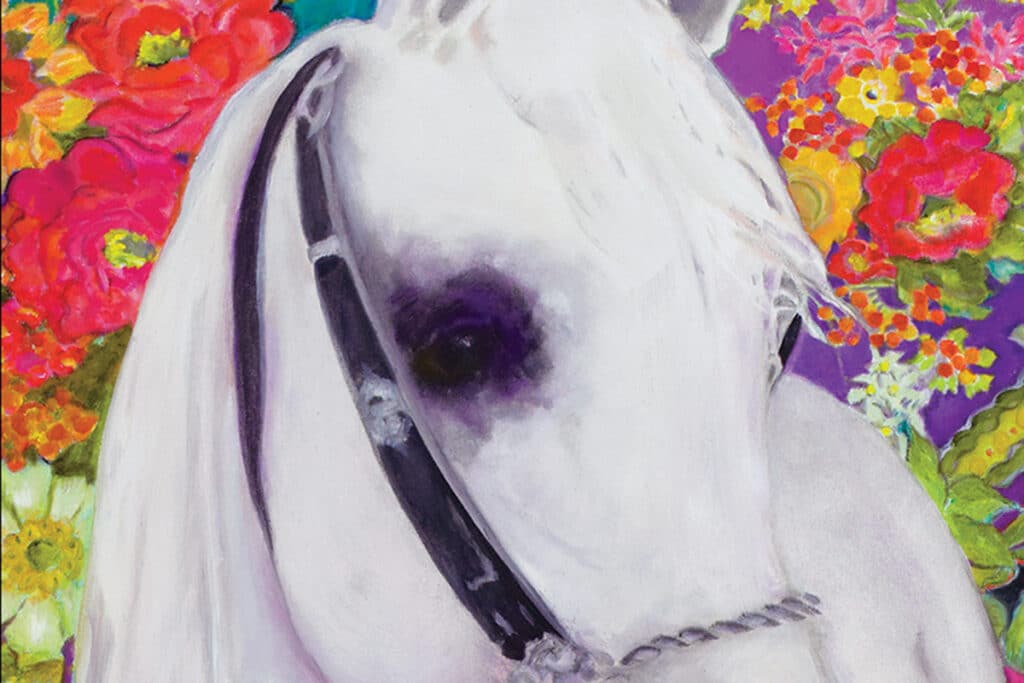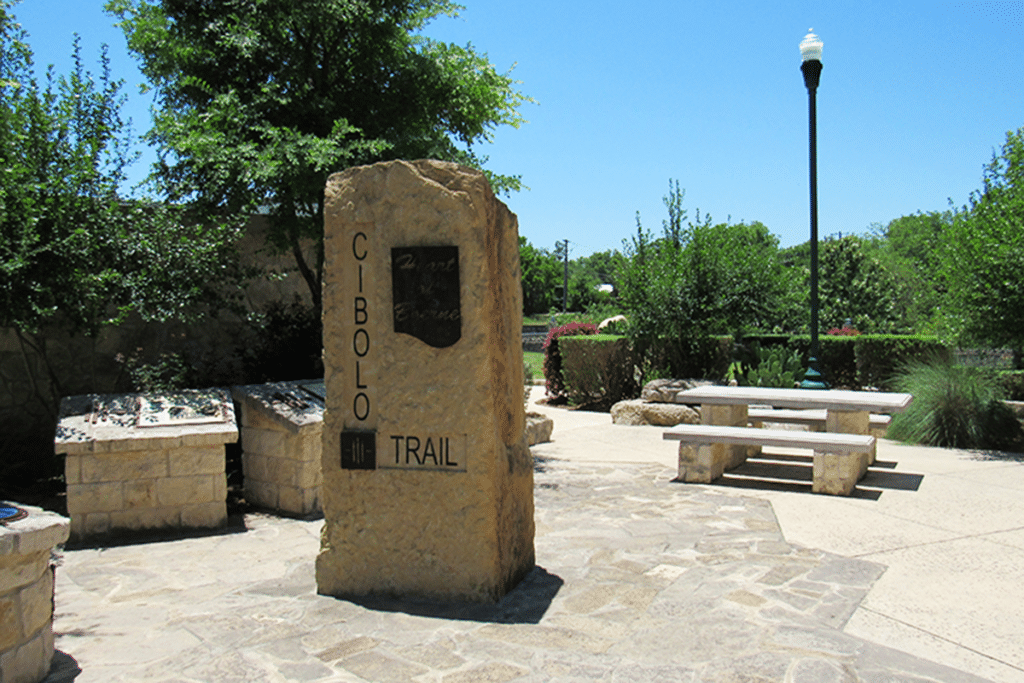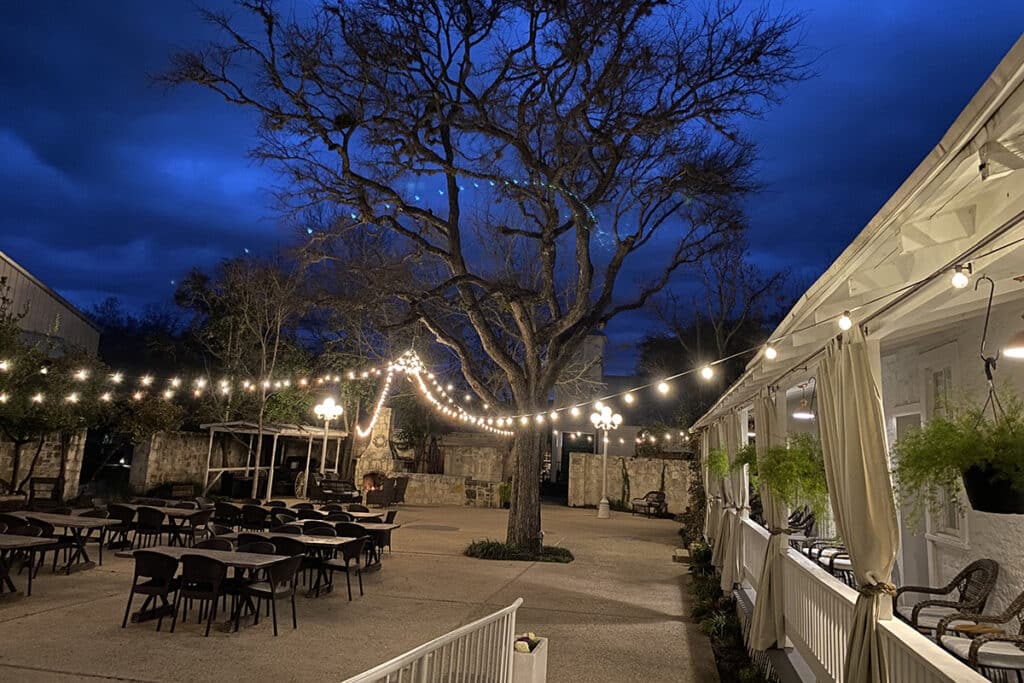Multi-course Dinners Offer Many Selections
Wash the family car (or have it washed, as the case may be) before your dinner at The Lodge; arriving in style, you’ll feel much better leaving it with the valet at the end of the curving, oak-shaded drive that leads to the restaurant. Almost automatically — or so it seems; this has happened more than once — the front door to the early ‘30s-era stone house will open, and you’ll be welcomed inside. Apart from the bathrooms, which charmingly retain both their bathtubs and (much of) their former use, the foyer is one of the few spaces that functions as it did when the Slimp family built the house in the then-distant-seeming hills outside of San Antonio. Bedrooms have become dining rooms, a sunroom has been transformed into a bar . . . and every room has taken on the look of a hunting lodge.
A giant moose head dominates the stairway to the second floor. Depending on the luck of the draw, you might be ushered into a room with a waterfowl theme, or perhaps wild game birds will be your lot; we dined under the watchful gaze of a wild turkey and a pheasant. The luck of the draw also extends to the noise level; the rooms are hard-surfaced, and a particularly animated party can dominate the smaller spaces. Ignore it, for the food that’s to come can transcend acoustic annoyances. And if you buy into the new evening format in which dinners are organized in set courses, even the ordering process can be painless. Here’s how it works:
Three- and five-course dinners are priced at $40 and $50 respectively; there’s a seven-course tasting menu featuring smaller portions, at $65 ($15 gets you tasting-sized wine pairings); and the grand slam is a Chef’s Grand Tasting Menu at $100 featuring chef Jason Dady’s “specially created items” with matching wines. Frankly, these are all deals, especially considering that the courses each contain no fewer than five selections — all appealing on the printed page. We would have gone for the seven-course tasting menu (this is selected by the chef) if not for the fact that all parties at the table would be served the same thing — not an advantage to a reviewer. Hence, five courses it was.
Appetizers and salads constitute Course 1, and the selection won’t be easy. Warm, grilled radicchio salad, braised wild boar ragu, summer tomato-English cucumber gazpacho . . . the darts finally fell on a diver sea scallop served over four-onion risotto and a grilled squab breast with foie gras toast and baby frisée. Wine was slow in coming, so we had plenty of time to devote to appreciation of the dishes before us. The scallop was prodigious — almost like a diminutive filet and just as meaty in texture. We don’t pretend to know what the four onions were in the risotto, but the flavor was fine, the texture only a touch too creamy (that desirable al dente center in each grain was lacking). And a drizzled sweet corn and basil oil offered up the perfume of fresh corn but no detectable basil. Not that we missed it.
It was the Chinese five-spice sauce that didn’t count for much with squab — especially underneath the frisée where it had little to do with the bird. Which, by the way, was extremely good. Our bottle of Cambria Julia’s Pinot Noir arrived about this time, and it proved to be just the ticket with the squab — and with the smoky lardons in the salad. Pinot and smoke are made for each other. Big white bowls are the serving vessel of choice at The Lodge, and they suit the generous portions. Course 2, the pastas, looked especially good in them. A suggestion of our waiter, the beef tenderloin Bolognese over pappardelle with mixed herbs and both Parmesan and Pecorino proved to be a triumph; a touch of cream (we assume it was cream) smoothed out the rustic sauce perfectly, and the pasta was tender to a “t”. Tender was not the lot of the parsnip and Fuji apple raviolis with sage brown butter; the pasta was especially chewy around the edges. But the filling was delicate and just barely perfumed with parsnip, and the sage butter was an inspired (and light) moistener. Toasted pine nuts added welcome crunch, too. But cinnamon? Well, why not.
Course 3 is, of course, the entrée, and here there are six choices, ranging from Cast Iron beef filet to pan-roasted herbed pheasant breast (about the only place in town to offer it) and grilled coastal Wahoo. Porcini-crusted lamb loin and fire-grilled striped bass (not ordinarily seen on local menus) caught our collective eye. The lamb, for its part, was exquisite — there’s no other word for it. The crust was just earthy enough to complement the perfectly rare loin. Yes, we did find the Yukon potato rosti over-herbed, but the leafy garnish of organic arugula with feisty piquillo peppers was right on target. Even without the advertised Niçoise olives. The striped bass did have a slightly musty aura at first, but that quickly disappeared in the face of its flaky texture and the garnish of “franks and beans” — actually baby fava beans, or a close cousin, with chunks of smoky pancetta. Or another close cousin. The organic squash spaghetti was probably unnecessary in the scheme of things, but we finished it nonetheless.
The following two courses, cheese and dessert, are presented on a separate menu, and most diners will have just as tough a time deciding as with the previous three. For the sake of contrast in our cheeses, we picked a dense and nutty Ossau Iraty and a lush, triple-cream St. André. The Iraty is a Basque cheese from the French side of the Pyrénées; tangy and spicy, it partnered beautifully with shaved fennel, arugula and a balsamic reduction. The creamy qualities of the St. André were unfortunately diminished by the cheese’s temperature; it was far too cold. At room temperature, both the cheese and the spicy, turkey fig red wine compote would likely have made another perfect pair.
The open-faced lavender crème brulée is typical of chef Dady’s inventive desserts — like most of the rest, it’s slightly tweaked from the traditional. By open-faced, the chef apparently means unmolded (or done in sheet form); in any case, the crème brulée is served on a plate with candied citrus peel, berry coulis and berries, and though there was little lavender in the equation, the total effect was extremely pleasant. Yes, pleasant. “Lemon Meringue Pie” (there are lots of quotation marks on the menu) with graham cracker brownie, lemon curd and Swiss meringue was also relatively free-form, and the meringue (Swiss meringue traditionally has lemon juice and glycerin added to the usual egg whites and confectioner’s sugar) appeared to have been torched. It boasted none of those weepy “eyes” (my quotation marks) that appear with an oven-baked, no-quotation-marks pie. Berries garnished this dish, too, but the graham cracker brownie was nowhere obvious to be found. As a bottom “crust” (my quotation marks again), maybe? Regardless, this was an appealingly subtle dessert, and a little subtlety wasn’t remiss at this point. Consider the low-key desserts as a counterpoint to the almost larger-than-life moose heads and pheasants frozen in flight — which makes The Lodge a very balanced experience indeed.
By Ron Bechtol




